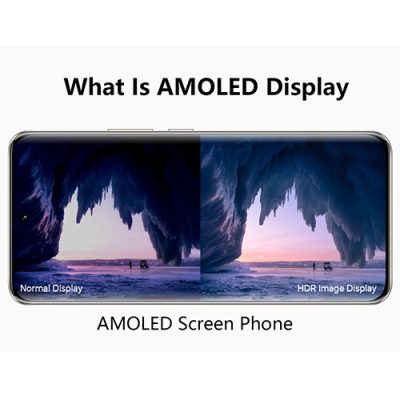Touchscreen News
What is AMOLED Display Technology?
Active-matrix organic light-emitting diode, or what’s more commonly referred to as AMOLED, is a special type of display technology that’s commonly used in smartphones, wearable electronics, laptops, televisions and other electronic displays. The “OLED” section refers to a thin film display that uses organic compounds from EL material, while the “AM” section refers to the “active matrix” technology powering the pixels.
So, how does AMOLED technology work? Basically, an AMOLED display features an active matrix of OLED pixels, which generate light when activated. These pixels are integrated into a thin film transistor array — and this array essentially functions as a series of switches, allowing for the controlled flow of electricity to each pixel. The thin film transistor array tells the AMOLED display which pixels need to be illuminated and when.
The continuous current of an AMOLED display is usually controlled by two or more thin film transistors for each pixel, which is needed to activate luminescence. One of the two thin film transistors starts and stops the storage capacitor from charging, while the remaining thin film transistor provides the voltage needed to achieve a constant current of electricity to the respective pixel. This in turn eliminates the need for high currents, such as those needed for use in passive-matrix OLED displays.
There are both advantages and disadvantages associated with AMOLED display technology. As stated above, AMOLED displays typically do not require backlighting, which is a huge benefit in itself. Each pixel consists of organic material that’s capable of generating its own light.
AMOLED displays are also highly energy efficiency, meaning they typically consume less power than other display technologies. If you’re looking for a display technology that’s going to run your battery dead after just 1-2 hours, consider AMOLED. It’s energy efficient, which also makes it inexpensive to operate in terms of power consumption.
On the other hand, AMOLEDs are prone to screen burn-in. As the name suggests, this is a condition in which overused images and/or colors become imprinted into the display.
When compared to a traditional LCD, some may argue that AMOLEDs are less suitable for viewing in sun-lit environments. For the typical user, this probably isn’t problem. But if you’re a business owner who wants to use an AMOLED display outdoors, you may want to choose a different configuration.
Hopefully, this gives you a better understanding of AMOLED technology and how it works.

